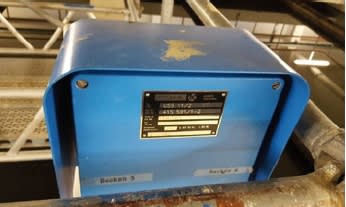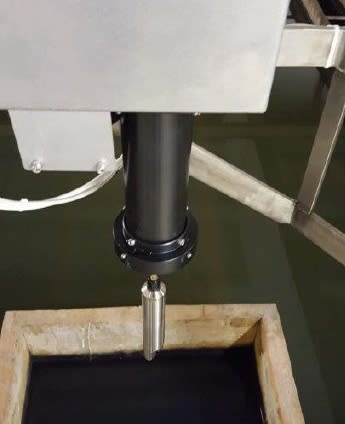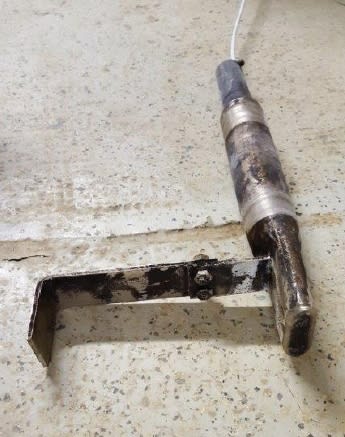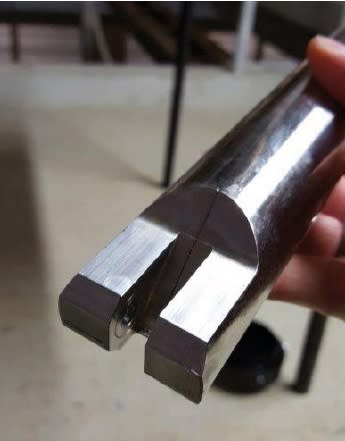Monitoring the sedimentation process in drinking water treatment
Application report | Water & Wastewater
- Dynamic tracking of sludge blanket and monitoring of clarified water zone.
- Optical measurement of sludge level for control of sludge removal.
- Reduced operating costs through optimal solids concentration .

Background
FWV (Fernwasserversorgung Elbaue-Ostharz Gmbh) is one of the largest water purveyors in Germany. The company supplies municipal utilities and municipalities in several federal states with drinking water for around two million people every day. The water purveyor operates several waterworks for water treatment of which one is situated in Mockritz near the city of Torgau on the banks of the Elbe river. The plant produces 60,000 m³ of drinking water per day.
Measurement requirements
The raw water extracted from the bank filtrate of the Elbe and the groundwater of adjacent floodplains is very rich in iron and manganese. It must therefore be prepared in a multi-stage process. The raw water is first aerated, roughly cleaned and filtered. Milk of lime is also added to it to adjust the desired pH value. The suspended solids (fluff) that form are removed from the process. The water is then thoroughly filtered in sand filter basins, disinfected and fed into the drinking water network.
The separation of clarified water from fluff takes place in 12 sedimentation tanks. These tube settlers have been renovated. In order to be able to remove the sedimented thin sludge discontinuously, the sludge level in the basins must be continuously measured and monitored by process instrumentation. The previously used ultrasonic sludge level switches from KROHNE were to be replaced after around 30 years in operation. The customer decided to test different technologies at first. Since the sedimented sludge is pre-thickened in the tanks, the new instrumentation had to be able to reliably detect the interface between sedimented sludge and the clear water area as well as determine the sludge blanket level.
KROHNE Solution
The OPTISYS SLM 2100 sludge level measurement system prevailed against an ultrasonic sludge level probe and an optical turbidity sensor from market competitors. The customer now uses the KROHNE system in all twelve sedimentation tanks.
In contrast to an ultrasonic probe, which is always installed above the water level and thus only transmits the measuring signal indirectly, the optical sludge level probe of the OPTISYS SLM 2100 passes through the entire process. The KROHNE system therefore provides measurement data not only at a specific point, but over the entire cross-section of the basin (direct measurement). It is also not influenced by false reflections, as was the case with the tested ultrasonic sludge level probe. The dynamic flow conditions in the basins repeatedly generate fluff, which can disturb echo signals. The sludge blanket level could therefore not be reliably detected by the ultrasonic probe.
Since its optical sensor reaches down to the bottom of the basin, the OPTISYS SLM 2100 can also be used much more flexibly than the tested turbidity sensor. The latter must be set to a fixed sludge level, allowing only a set switch-on point for the sludge discharge pump.
The KROHNE system detects all sludge phases and provides accurate measurement data on sludge concentration and sludge level. It measures continuously. In this way, the measuring system is also able to monitor one specific "zone" for controlling the pumps during de-pumping of the sludge (zone tracking). It can be parameterised according to customer requirements.
Customer benefits
The OPTISYS SLM 2100 provides a smooth measuring signal for optimum control of the sludge removal. It is designed to avoid using a strongly jumping measurement signal for process control. In this way, the customer stands to gain from usable measured values.
With the help of the measuring system, the solids concentration - and thus the sludge quality - can be determined more accurately, which is of decisive importance for the control of a downstream sludge dewatering system. The amount of water in the removed sludge is adjusted to a constant size by the prethickening in the sedimentation tank and minimized somewhat. In addition, the customer benefits from the low operating costs of the measuring device. The robust transmitted light sensor of the OPTISYS SLM 2100 requires comparartively little maintenance.
The comprehensive KROHNE support also provided added value for the customer. This ranged from the inspection of the measuring points to configuration and commissioning to the fine adjustment of the measuring system in the after-sales service.








